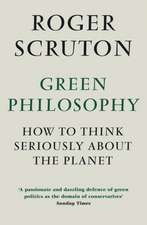Animal Ecology
Autor Charles S. Eltonen Limba Engleză Paperback – 18 iul 2001
Charles Elton was one of the founders of ecology, and his Animal Ecology was one of the seminal works that defined the field. In this book Elton introduced and drew together many principles still central to ecology today, including succession, niche, food webs, and the links between communities and ecosystems, each of which he illustrated with well-chosen examples. Many of Elton's ideas have proven remarkably prescient—for instance, his emphasis on the role climatic changes play in population fluctuations anticipated recent research in this area stimulated by concerns about global warming.
For Chicago's reprint of this classic work, ecologists Mathew A. Leibold and J. Timothy Wootton have provided new introductions to each chapter, placing Elton's ideas in historical and scientific context. They trace modern developments in each of the key themes Elton introduced, and provide references to the most current literature. The result will be an important work for ecologists interested in the roots of their discipline, for educated readers looking for a good overview of the field, and for historians of science.
For Chicago's reprint of this classic work, ecologists Mathew A. Leibold and J. Timothy Wootton have provided new introductions to each chapter, placing Elton's ideas in historical and scientific context. They trace modern developments in each of the key themes Elton introduced, and provide references to the most current literature. The result will be an important work for ecologists interested in the roots of their discipline, for educated readers looking for a good overview of the field, and for historians of science.
Preț: 316.34 lei
Nou
Puncte Express: 475
Preț estimativ în valută:
60.54€ • 62.54$ • 50.38£
60.54€ • 62.54$ • 50.38£
Carte tipărită la comandă
Livrare economică 25 martie-08 aprilie
Preluare comenzi: 021 569.72.76
Specificații
ISBN-13: 9780226206394
ISBN-10: 0226206394
Pagini: 296
Ilustrații: 8 halftones, 13 line drawings
Dimensiuni: 152 x 229 x 18 mm
Greutate: 0.38 kg
Ediția:1
Editura: University of Chicago Press
Colecția University of Chicago Press
ISBN-10: 0226206394
Pagini: 296
Ilustrații: 8 halftones, 13 line drawings
Dimensiuni: 152 x 229 x 18 mm
Greutate: 0.38 kg
Ediția:1
Editura: University of Chicago Press
Colecția University of Chicago Press
Notă biografică
Charles Elton established and led Oxford University's influential Bureau of Animal Population. He was the author of a number of books, among them The Ecology of Invasions by Animals and Plants, recently reprinted by the University of Chicago Press.
Mathew A. Leibold is an associate professor in the Department of Ecology and Evolution and chair of the Committee on Evolutionary Biology at the University of Chicago.
J. Timothy Wootton is an associate professor in the Department of Ecology and Evolution and the Committee on Evolutionary Biology at the University of Chicago.
Mathew A. Leibold is an associate professor in the Department of Ecology and Evolution and chair of the Committee on Evolutionary Biology at the University of Chicago.
J. Timothy Wootton is an associate professor in the Department of Ecology and Evolution and the Committee on Evolutionary Biology at the University of Chicago.
Cuprins
List of Plates and Diagrams in Text
Preface
Introduction by Professor Julian S. Huxley, M.A.
New Introduction by Mathew A. Leibold and J. Timothy Wootton
1. Introduction
2. The Distribution of Animal Communities
3. Ecological Succession
4. Environmental Factors
5. The Animal Community
6. Parasites
7. Time and Animal Communities
8. The Numbers of Animals
9. Variations in the Numbers of Animals
10. Dispersal
11. Ecological Methods
12. Ecology and Evolution
Conclusion
List of References
Index
Preface
Introduction by Professor Julian S. Huxley, M.A.
New Introduction by Mathew A. Leibold and J. Timothy Wootton
1. Introduction
2. The Distribution of Animal Communities
3. Ecological Succession
4. Environmental Factors
5. The Animal Community
6. Parasites
7. Time and Animal Communities
8. The Numbers of Animals
9. Variations in the Numbers of Animals
10. Dispersal
11. Ecological Methods
12. Ecology and Evolution
Conclusion
List of References
Index











